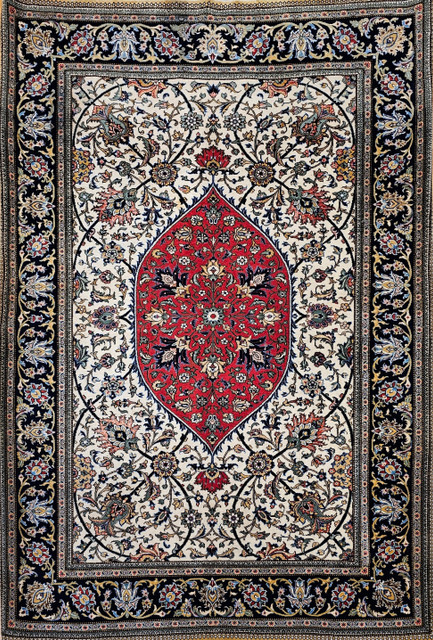Unveiling the Soul of Handwoven Art: An Introduction to Oriental Rug Fundamentals
Posted by The Persian Knot Gallery on Jul 12th 2025
Welcome, connoisseurs of beauty and history, to The Persian Knot Gallery's blog! Today, we invite you on a captivating journey into the heart of handwoven artistry: the world of Oriental rugs. Beyond their exquisite patterns and vibrant colors, these magnificent textiles carry within every single knot thousands of years of history, rich cultural narratives, and a profound testament to human ingenuity and craftsmanship.
At The Persian Knot, we believe that truly understanding the origins, diverse styles, and intricate techniques behind these masterpieces deepens your appreciation and strengthens your connection to these timeless works of art. Let's begin our exploration into the foundational elements that define the vast and fascinating universe of Oriental rugs.
The Enduring Legacy: A Thread Through Millennia
The tradition of handmade rug production isn't just old; it stretches back millennia, a profound testament to humanity's innate desire for comfort, warmth, and artistic expression. Imagine civilizations long past, meticulously crafting these functional works of art.
The most compelling proof of this ancient craft is the remarkable Pazyryk Rug. Discovered in 1949 by Russian archaeologist S.I. Rudenko in Siberia's remote Pazyryk Valley, this miraculously preserved fragment dates back an astounding 2,500 years to the 5th century BC! Its intricate design and sophisticated weaving techniques offer a vivid glimpse into the advanced artistry employed by early civilizations, proving that the roots of rug weaving run incredibly deep.
Three Pillars of Oriental Rug Artistry: Workshop, Tribal, & Village
The vast and beautiful tapestry of Oriental rugs, spanning countless geographical regions and diverse cultures, can broadly be categorized into three distinct types. These classifications are based on their unique weaving origins, the lifestyle of their creators, and the characteristics that define their designs:
- Artisan Workshop Rugs: The Pinnacle of Refined Artistry These rugs represent the apex of planned design and meticulous execution. Woven in established workshops, often under the patronage of royalty or wealthy merchants, they feature highly intricate patterns, sophisticated color palettes, and exceptional fineness, a true reflection of organized artistic vision.
- Tribal (Nomadic) Rugs: Rooted in Necessity, Bursting with Spontaneity Born from the functional needs of nomadic peoples constantly on the move, these rugs are characterized by their raw beauty and authentic charm. Limited by portable looms and a constantly changing environment, tribal weavers infused their pieces with spontaneous creativity, often reflecting their immediate surroundings and personal stories directly from the weaver's mind.
- Village Rugs: A Unique Blend of Local Tradition and Individual Expression Woven in settled village communities, these rugs often bridge the gap between tribal spontaneity and workshop refinement. They carry distinct localized traditions, often identifiable by specific color palettes and geometric designs passed down through generations, yet still allow for individual expression within those frameworks.
Beyond the Surface
This introduction merely scratches the surface of the rich history and diverse characteristics of Oriental rugs. Each category – Workshop, Tribal, and Village – holds its own fascinating stories, distinct patterns, and unique spirit.
At The Persian Knot Gallery, we are dedicated to sharing these stories and helping you understand the provenance, craftsmanship, and soul behind every piece in our curated collection. Stay tuned for future blog posts where we will delve deeper into each of these fascinating categories, revealing more of the hidden wonders within every knot.

